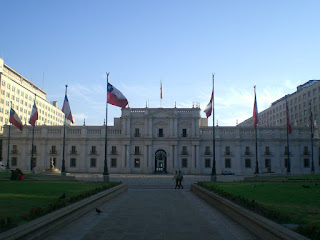The legal world is abuzz with Ted Olson's
testimonial on behalf of gay marriage in Newsweek as
Perry v. Schwarzenegger kicks off in federal court. He and David Boies, who faced off in
Bush v. Gore in 2000, are joining forces to make the case that Proposition 8 is, in essence, unconstitutional.
It's a stunning argument, and shows why the former Bush administration Solicitor General is among the top barristers in the country. It's safe to say that if Olson wins this case before the Supreme Court, he'll secure for himself a place among the top barristers in American history, alongside Daniel Webster, not just John Roberts.
I have little to add to this story that others cannot with greater sophistication; for now, it may be helpful to bookend Olson's Newsweek turn with this
NY Times profile from August 2009, which includes this interesting nugget from Robert Bork:
Conservative colleagues are kinder, but many remain bewildered. Former Judge Robert H. Bork, a close friend who has called same-sex marriage a “judicial sin,” said he could not bear to speak to Mr. Olson about the case.
“I don’t want to get into an argument,” Mr. Bork said. “But I’d like to know why.”
From a critical legal studies perspective, Olson and Co. are likely counting on the votes of Breyer, Sotomayor, Stevens and Ginsburg. It takes one more vote, and that vote would likely come from Anthony Kennedy, who wrote the majority opinion in each of
Romer v. Evans, the 1996 case that invalidated a Colorado constitutional amendment on the basis that it violated rational basis scrutiny under the Equal Protection Clause and
Lawrence v. Texas, the 2003 case that invalidated state laws against same-sex sodomy on the basis of substantive due process (for non-lawyers, essentially a sister doctrine of equal protection).
We can't probe Justice Kennedy's brain, but two takeaway points from
Lawrence may show where this is headed:
In her concurrence, then-Justice Sandra Day O'Connor argued that the sodomy law not only violated the Due Process Clause, but violated the Equal Protection Clause under a rational-basis scrutiny -- i.e., that there wasn't a reasonable relationship to a legitimate government interest). (Incidentally, I'd be fascinated in the takes of both retired Justice O'Connor and Justice Souter on this case).
In his dissent, Justice Scalia argued as follows:
The Texas statute undeniably seeks to further the belief of its citizens that certain forms of sexual behavior are “immoral and unacceptable"... the same interest furthered by criminal laws against fornication, bigamy, adultery, adult incest, bestiality, and obscenity.... The Texas statute, [the majority] says, “furthers no legitimate state interest which can justify its intrusion into the personal and private life of the individual."....
This effectively decrees the end of all morals legislation. If, as the Court asserts, the promotion of majoritarian sexual morality is not even a legitimate state interest, none of the above-mentioned laws can survive rational-basis review.
Scalia is prescient in at least this regard -- presumably, under the
Lawrence reasoning, Prop 8 and referenda and state laws like it could be rendered unconstitutional without even so much as proclaiming gays and lesbians as a protected class, and it's really just a jurisprudential baby step from
Lawrence.









